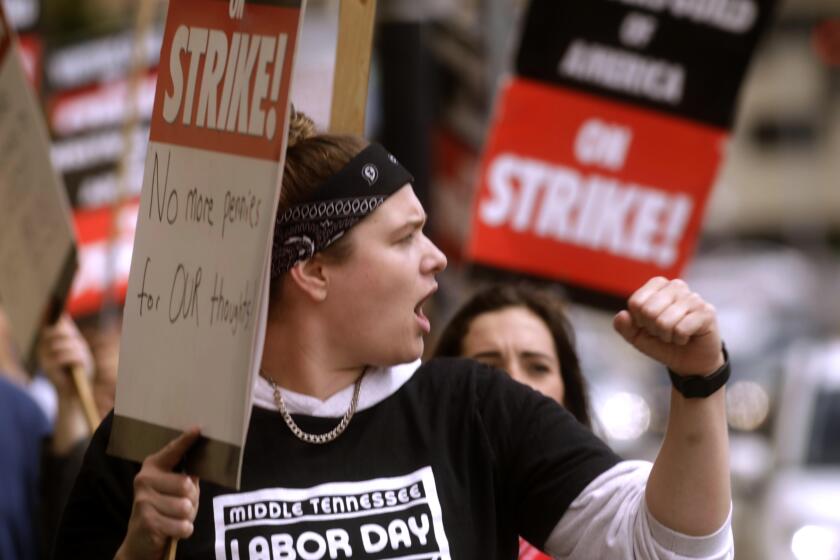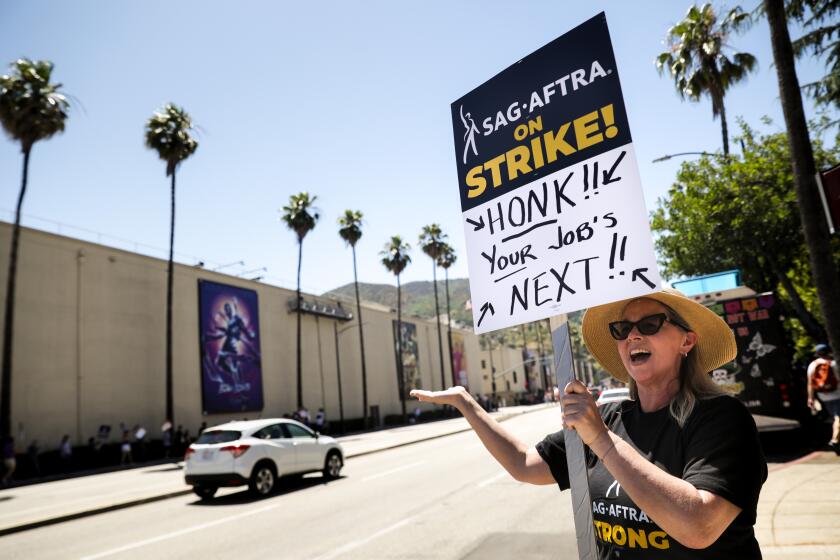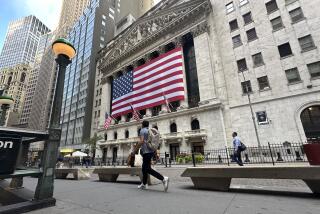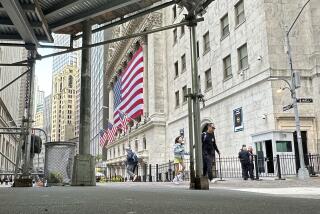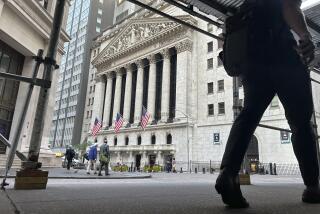Wall Street rises to regain momentum after last weekâs lull
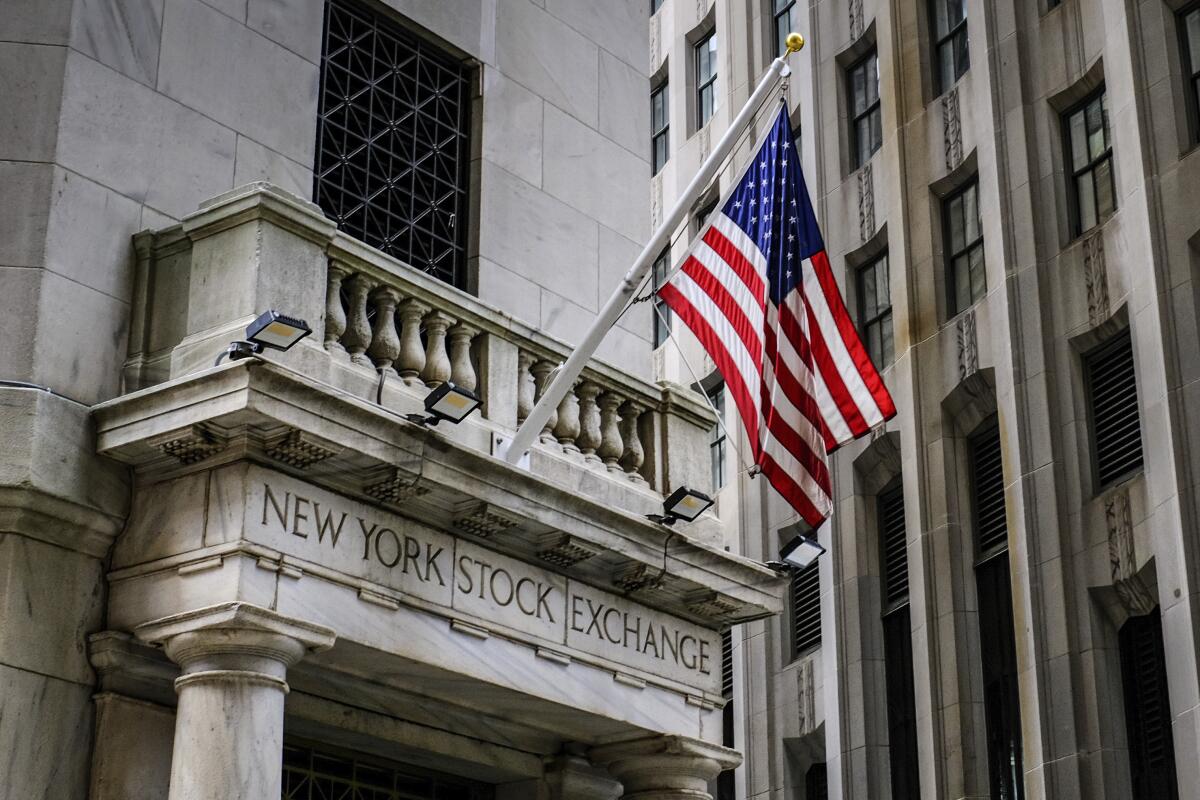
Stocks climbed Monday as Wall Streetâs big rally for the year kicked back into gear following a brief hiccup.
The Standard & Poorâs 500 index rose 40.41 points, or 0.9%, to 4,518.44 and recovered more than a third of its loss from last week. That was its first losing week in four and just its third in the last 12.
The Dow Jones industrial average rallied 407.51 points, or 1.2%, to 35,473.13, and the Nasdaq composite added 85.16 points, or 0.6%, to 13,994.40.
Berkshire Hathaway rose 3.6% and was a major force lifting the market after the company run by famed investor Warren Buffett reported stronger profit and revenue for the spring than analysts expected. Pharmaceutical company Viatris also rose after its results topped forecasts. Viatrisâ stock climbed 3.9%.
The stronger-than-expected reports helped offset a 3.8% drop for Tyson. The companyâs results for the latest quarter fell far short of analystsâ expectations, and Tyson said it would close four chicken facilities as it tries to cut costs.
Corporate profits have been mostly beating forecasts as the season for reporting results from April through June enters its tail end. Nearly four out of five companies in the S&P 500 have topped expectations so far, according to FactSet. But theyâre still on track to report their sharpest drop in profit from year-earlier levels since the summer of 2020, when the pandemic was pummeling the global economy.
Social media is dying after the implosion of Twitter. Threads, Bluesky and Mastodon are trying to replace X but are coming up short. Maybe thatâs OK.
Besides profit reports from some media giants such as Walt Disney Co. and Fox, the upcoming week also features highly anticipated reports on inflation.
Inflation has been the key to Wall Streetâs big moves in recent years after soaring to its highest level in generation. Since hitting a peak last summer, inflation has been cooling steadily. That has raised hopes that the Federal Reserve may be done with its drastic hikes in interest rates.
Higher rates try to smother inflation by bluntly slowing the entire economy and hurting prices for investments. The Fed has quickly pulled its federal funds rate to the highest level in more than two decades, up from virtually zero early last year.
Inflation has come down from more than 9% last summer to 3% in June. But many economists and professional investors say the toughest part may still be ahead as the Fed tries to get inflation down toward its 2% target.
Sticky inflation could mean Wall Street latched too quickly onto the hope that rate hikes are over and that the economy will have a soft landing. If thatâs the case, the S&P 500âs rally of 19.5% through the yearâs first seven months could also be overdone, as critics suggest.
Some recent earnings reports may be hinting at the still-existing risk of a mild recession, as all of the Fedâs past rate hikes make their way through the system, said Amanda Agati, chief investment officer for PNC Financial Services Asset Management Group.
She points to Chipotle, Starbucks and Apple, which all reported revenue either below or right at analystsâ expectations for the spring. Theyâre âvery much a part of the daily life of upper middle-income consumers. Yet their sales were weak.â
Oil prices have perked up recently. The price of a barrel of U.S. crude added roughly $10 through July to top $80, though it slipped 88 cents to $81.94 on Monday.
WGA and the studios met on Friday for the first time in three months, but there are diminished expectations on either side of a breakthrough that would resolve the months long strike.
A remarkably resilient job market may also be putting a floor under inflation by giving households fuel to keep spending and keep inflationary forces alive. A report last week showed that wages for workers rose more in July than expected, though hiring was cooler than forecast.
On Thursday, the U.S. government will release the latest monthly update on inflation, and economists are forecasting that it will show a 3.3% rise in prices from year-earlier levels. That would be an acceleration from Juneâs rate.
The Fed pays particularly close attention to what prices are doing for services outside of rent and housing. Much of the improvement in that area during June came from falling airfares. Now that theyâre back to where they were before the pandemic, they may not move much more now, economists at Deutsche Bank say.
In stock markets abroad, indexes were mixed across Europe and Asia.
In the bond market, yields ticked higher after jumping last week and putting pressure on the stock market. The yield on the 10-year Treasury rose to 4.09% from 4.04% late Friday. It helps set rates for mortgages and other important loans.
Concerns about AI are central to the current Writers Guild and SAG-AFTRA strikes, but Americans in other industries also are worried, according to a new poll for the Los Angeles Times.
The two-year Treasury yield, which moves more on expectations for the Fed, rose to 4.77% from 4.76%.
AP writers Yuri Kageyama and Matt Ott contributed to this report.
More to Read
Inside the business of entertainment
The Wide Shot brings you news, analysis and insights on everything from streaming wars to production â and what it all means for the future.
You may occasionally receive promotional content from the Los Angeles Times.

